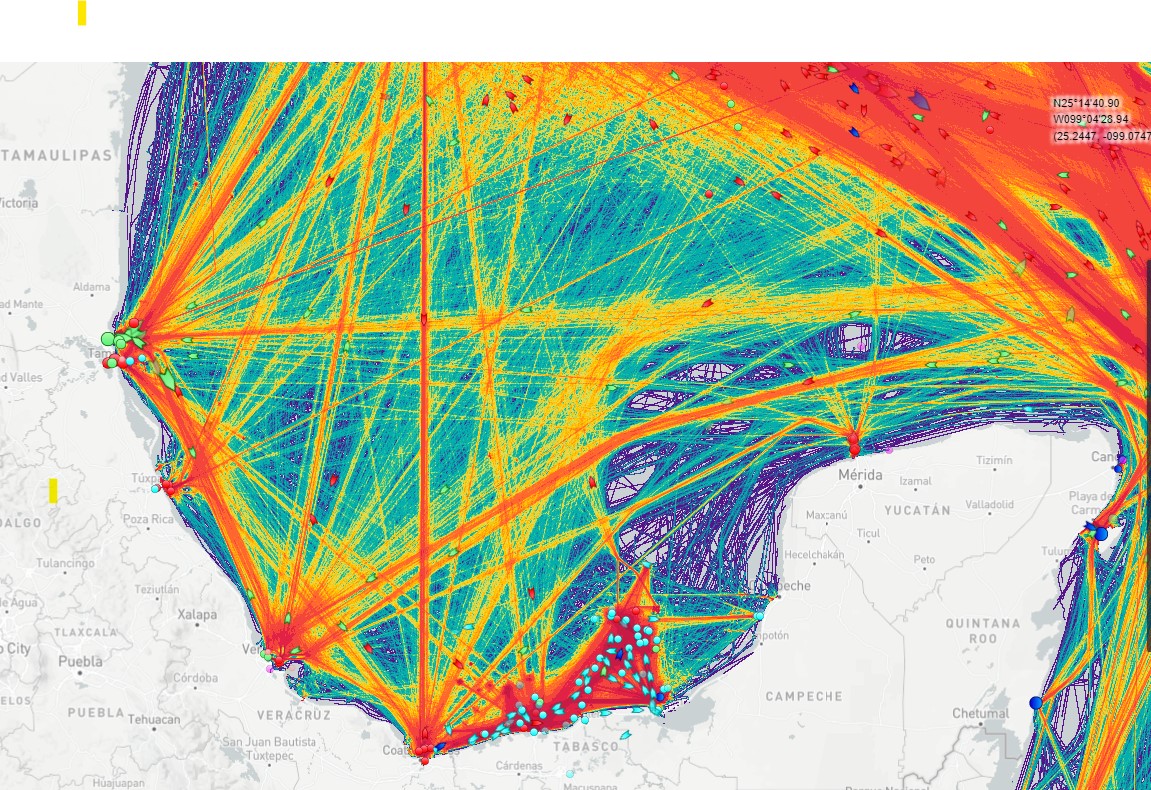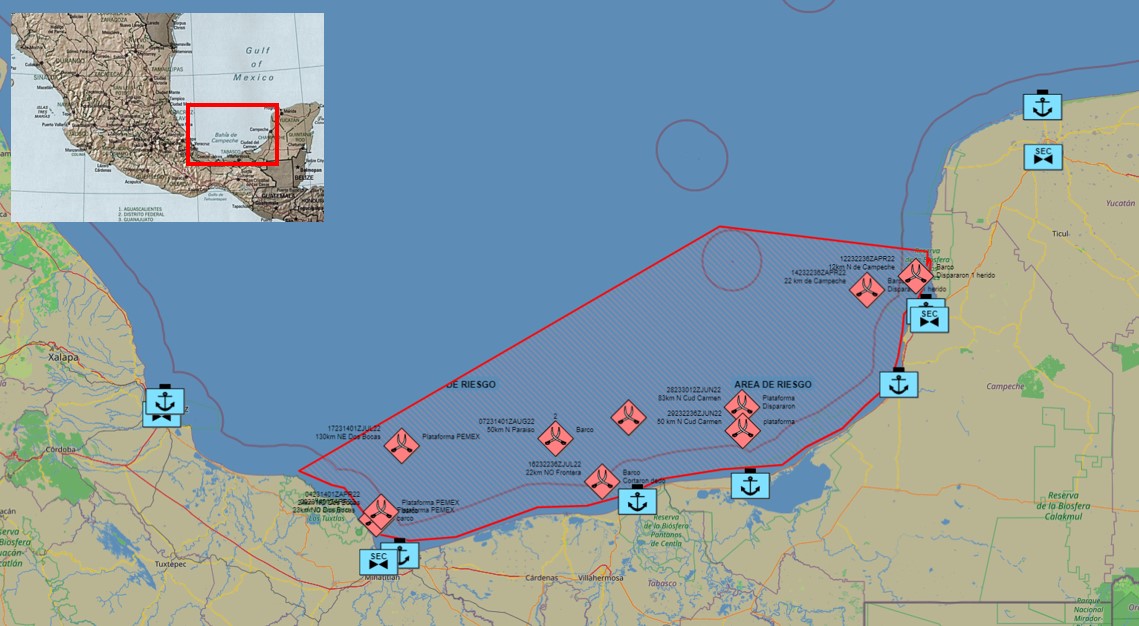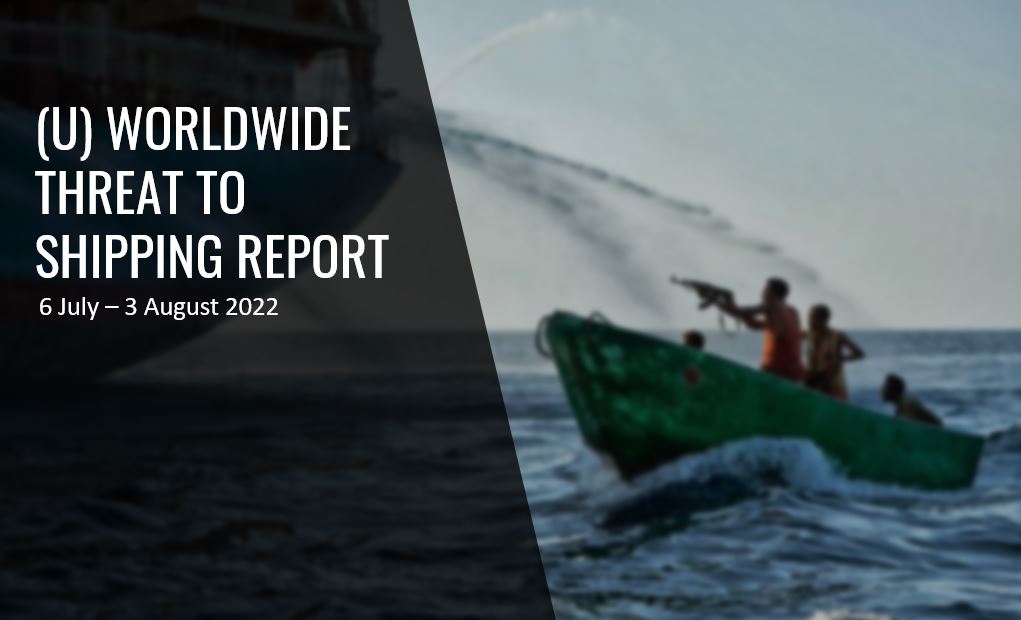INTREP: Piracy in the Gulf of Campeche (Mexico) dramatically Increases
August 22, 2022
by Alexei Zarembski

Piracy and maritime armed robbieries in Latin America has always been an issue but since 2018 it has spiked considerable. One particular emerging hot spot is Mexico's Gulf of Campeche. Now the pandmeic and the nation´s geopolitical have further increased this trend
OF NOTE: Piracy acts occur in international waters (high seas), while maritime armed robberies occur within territorial waters, yet since most attacks in Mexico occur farther than 12NM of the coast (yet still in territorial waters) for this report, we shall call all armed robbery incidents as pirate attacks.
EXECUTIVE SUMMARY
- Due to various factors, there are no official or reliable figures on pirate attacks and their effectiveness in Mexico. After an evaluation of the little information available, it is POSSIBLE that there are around 100 - 150 attacks per year in the Gulf of Campeche (GoC), of which only 20% are reported.
- Since 2018, pirate attacks have become more complex and aggressive, so it is increasingly common to find reports of injured victims, which is concluded to be around 20-30% of attacks.
INTRODUCTION
Piracy in the Caribean and the Gulf of Mexico has been an ongoing issue since the age of sail, Yet during the 19th and 20th centuries, it has been kept under control. It was only around 2018 that pirate attacks and maritime armed robberies spiked in the region, with another spike during the pandemic.
SITUATION
The GoC is a specially desirable hunting ground for pirates for the following reasons:
- High level of slow-moving traffic
- A high number of oil rigs with no protection
- A high number of anchored ships used for rig replenishment
- A high number of rivers to hide from navy and law enforcement patrols

Another critical factor in the growing number of pirates in the GoC is Mexico's current geo-political and security scenario. The Mexican Navy has been given additional responsibilities on land (patrolling customs, airports, and ports of entry) and, at the same time, has been given budget cuts (reportedly one in fuel consumption). This has stretched their operational capabilities and put a strain on their ability to patrol their coast and respond to pirate attacks, contributing to pirate impunity.
Additionally, the current security doctrine of abrazos no balazos (hugs, not shootouts) has focused on fighting cartels through deterrence rather than persecution. This has made many criminal groups act without impunity and have thus increased their boldness.
Almost all criminal groups in Mexico are taxed by the cartels and therfore it would be safe to assume that pirates are also either direclty connected to a cartel or simply dependent on their permission to conduct attacks.
MEXICAN PIRATE MO
Pirate attacks in the GoC almost exclusively happen at night, within 10 to 90 km (5NM - 48NM) from the coast. Pirate teams are made up of 2 – 3 speedboats with a total of 5 – 15 men. On some occasions, pirates have been reported to wear military-style uniforms. Their weapons include assault rifles, pistols, shotguns, and bladed weapons. On one rare occurrence in 2019, 23 boats occupied a PEMEX platform and dismantled the infrastructure.
Pirates only used to board platforms without personnel, but in recent years they have evolved and now attack:
- Fishing boats
- Oil platforms
- Offshore supply vessels
- International cargo ships
The attacks involv injuring the crew (to assure compliance), hostage taking (but never kidnapping), theft, and discharge of firearms. In April of this year, for example, a pirate cut off a crew member's finger without much provocation.
Occasionally the pirates will start shooting at their target without being provoked (usually directed at the superstructure). They do this to intimidate the crew, stop the ship and make boarding easier. In the last year, only one moment was reported of a sailor injured by a burst that was fired before boarding.
STATISTICS
Pirate attacks in the Gulf often go unreported for two reasons:
- For oil companies: in many cases, it is the fear of an increase in insurance and policies
- Ror international fishermen and ships: it is the lack of an official means to report attacks (like those that exist in Africa and Asia)
Because there are no reliable statistics; the sources vary widely; Officials report 15-25 attacks a year, but other reliable sources, such as the International Transport Workers Federation, put the figure at around 100-180 a year. What is certain is that about 50% - 80% of attacks are not officially reported (this figure is consistent with the general percentage of unreported crimes in Mexico, which is around 90%).
Due to the lack of official figures, the percentage of successful attacks is not known with certainty, but based on official information it would be valid to assume that if a ship or platform has no security, attacks are successful.
OF NOTE: International Private Military and Security Companies (PMSC) can't be hired in this area of the world as they can in Africa and Asia because most attacks happen within international waters. Private armed security companies in Mexico are also not very keen on providing armed ship security due to the strict self-defense laws that hinder the ability of guards to do warning shots (considered a homicide attempt in Mexico) and protect the ship when boarded. Additionally, the calibers allowed for private armed guards in Mexico are too small. Caliber allowed can't exceed .380/12-gauge/22LR, which is inadequate for long-range shooting at sea. PMSC in Africa uses 7.62x39mm and higher and is permitted to do warning shots.
DANGER ZONES
The most dangerous areas are the south of the state of Veracruz, Tabasco, and Campeche. These areas favor pirates due to the high traffic of ships and the large number of estuaries that protect pirate vessels.

ASSESSMENT
- Piracy in the GoC will HIGHLY LIKELY continue to rise as the security situation in the country worsens. Better reporting will LIKELY be avalibale as the issue gains national and international attention. Once better data is released the Navy and private Industry will be better equiped to deal with the issue.
It is LIKELY that the pirate gangs are related to the cartels of the region:
Veracruz and Tabasco (CJNG and Zetas)
- Campeche (Pacific Cartel, Sinaloa Cartel and CJNG)
END OF REPORT
Copyright by Vigiles Analytica. All rights reserved. ©2025
